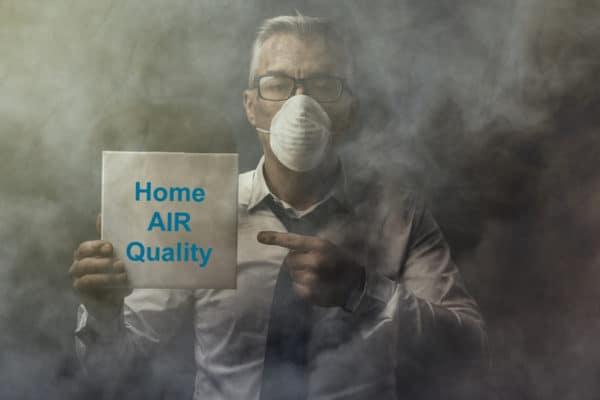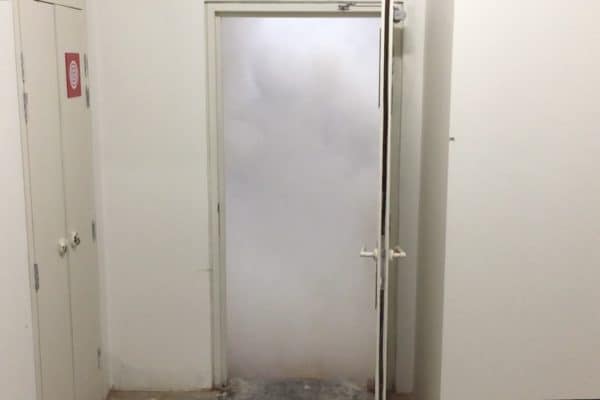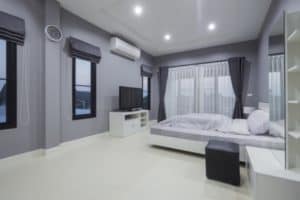5 Types of Fans in HVAC (Characteristics & Applications)
Fans are one of the major elements in HVAC. Mechanical ventilation in buildings requires fans. But, there are many different types of fans in the market. So, what are the common types of fans used in HVAC?
Generally, there are 5 common types of fans in HVAC as follow:
- Smoke Spill Vane Axial Fan
- Cabinet In-Line Centrifugal Fan
- In-Line Mixed Flow Duct Fan
- Wall-Mounted Propeller Fan
- Induced Jet Fan
Different HVAC fans have different characteristics and because of that, their applications also differ. Some types of HVAC fans can be applied in different fields while others are specifically made for certain applications.
1. Smoke Spill Vane Axial Fan
Smoke spill vane axial fans arguably are the most important type of fan in HVAC. They are responsible for smoke extraction, staircase pressurization and lift lobby pressurization which is related to people’s life.
In HVAC, there are two types of axial fans; a) vane axial fan and b) axial fan. Vane axial fans are physically longer and they are able to handle a higher external static pressure than axial fans.
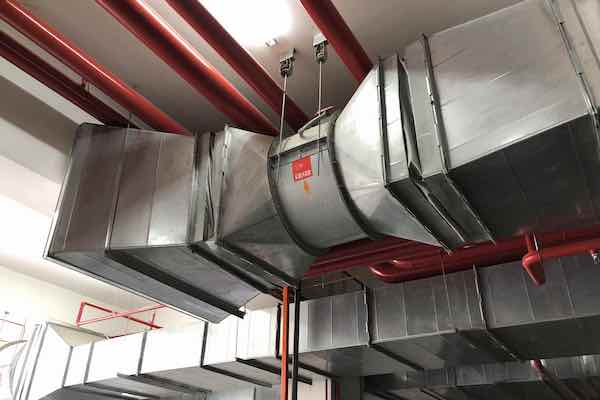
Usually, smoke spill vane axial fans are selected when the external static pressure requirement is 3 inches and above. Otherwise, the slightly cheaper smoke spill axial fans are used.
Smoke spill vane axial fans are round in shape. They need a round-to-rectangular duct fitting on both ends for duct connection. Besides, they also need a pair of fire-rated canvases to absorb the movement during startup. Learn more about the detail of HVAC fan duct connections.
Furthermore, a typical smoke spill vane axial fan requires 4 vibration isolators in between its slab supports before it is anchored onto the slab to prevent the vibration of the fan from transmitting to the floor above.
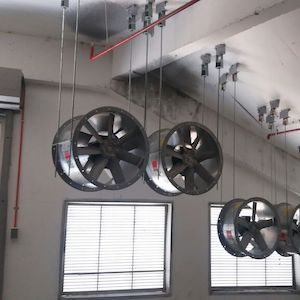
Often, smoke spill vane axial fans are the largest type of fan in HVAC. Their physical dimension can go up to 2000mm in diameter and their airflow capacity can go up to 450,000 m3/hr.
Smoke spill vane axial fans often use a Class H motor with a minimum of IP54 for enclosure protection. Their impeller pitch angle can be manually adjusted when necessary (eg: undersized or oversized).
For installation, smoke spill vane axial fans can be hung from the slab or sit on the floor with a support frame. They typically connect to large ducts in the basement or in a mechanical room depending on applications.
During operation, smoke spill vane axial fans produce a loud noise. Hence, they are always placed inside dedicated mechanical rooms, far away from the crowd.
Because smoke spill vane axial fans are huge, they must be initiated gradually to prevent power surges. So, an auto-trans starter or a star-delta starter is used to gradually speed up the fan.
It is considerably dangerous to stay near a large smoke spill vane axial fan during initial startup. Any loose part will be lethal as the giant impeller spins at more than 1500 RPM.
2. Cabinet In-Line Centrifugal Fan
Cabinet in-line centrifugal fans are commonly used as the exhaust and fresh air fan for toilets and mechanical rooms for electrical transformers, cold water tanks and fire pumps.
The primary reason to use cabinet in-line centrifugal fans is low noise operation. With a housing (cabinet), the noise produced by the centrifugal fan is greatly suppressed.
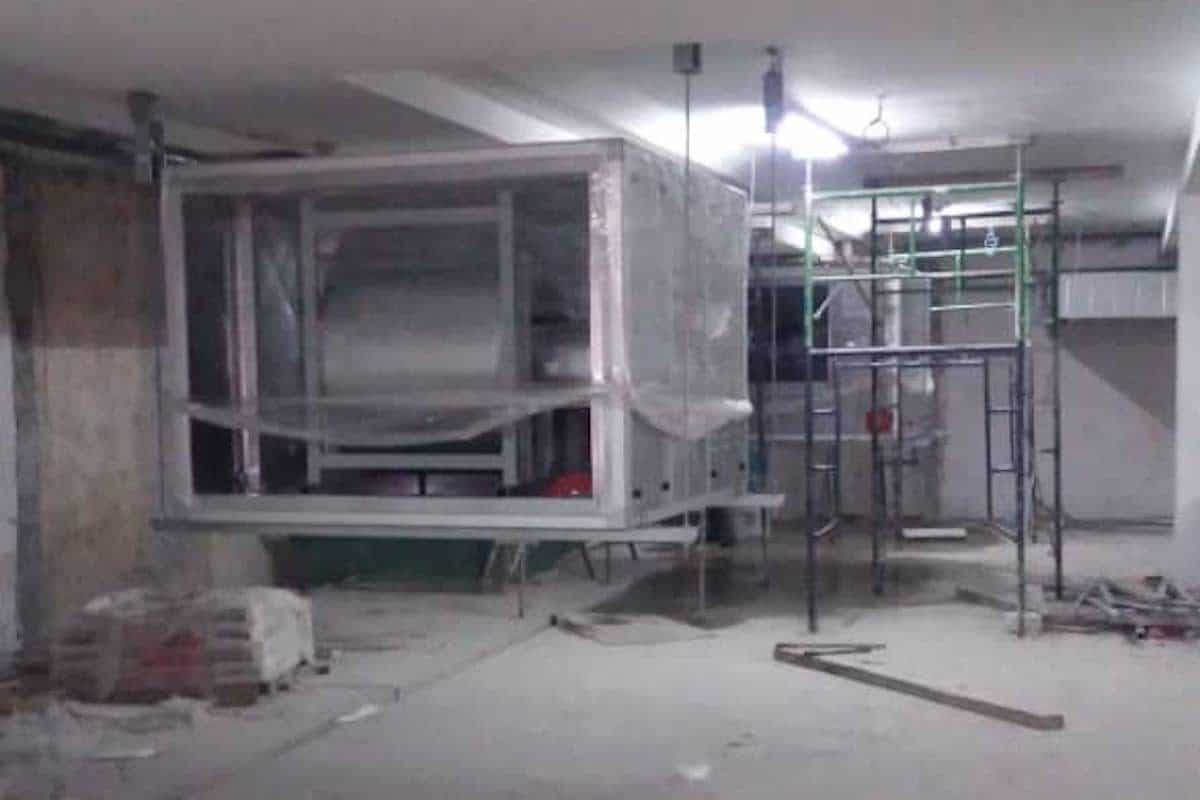
Other than normal ventilation applications, cabinet in-line centrifugal fans can also be used for smoke extraction, staircase pressurization, lift lobby pressurization and kitchen exhaust. For such an application, they are better known as smoke spill cabinet in-line centrifugal fans.
Unlike smoke spill vane axial fans, smoke spill cabinet in-line centrifugal fans are square in shape. They are much quieter but they can’t deliver as much airflow as axial fans. Furthermore, cabinet fans are very expensive. Their cost can be 2-3 times more than axial fans.
It is very common to have cabinet fans with a separated motor compartment, especially for fire-related applications. Such cabinet fans are also known as belt-driven cabinet fans. Meanwhile, non-fire-related cabinet fans are direct driven.
With the motor separated from the blades, maintenance is easier given that enough space is allocated. However, the belt needs to be checked periodically or replaced when necessary in order to maintain the performance of the fan.
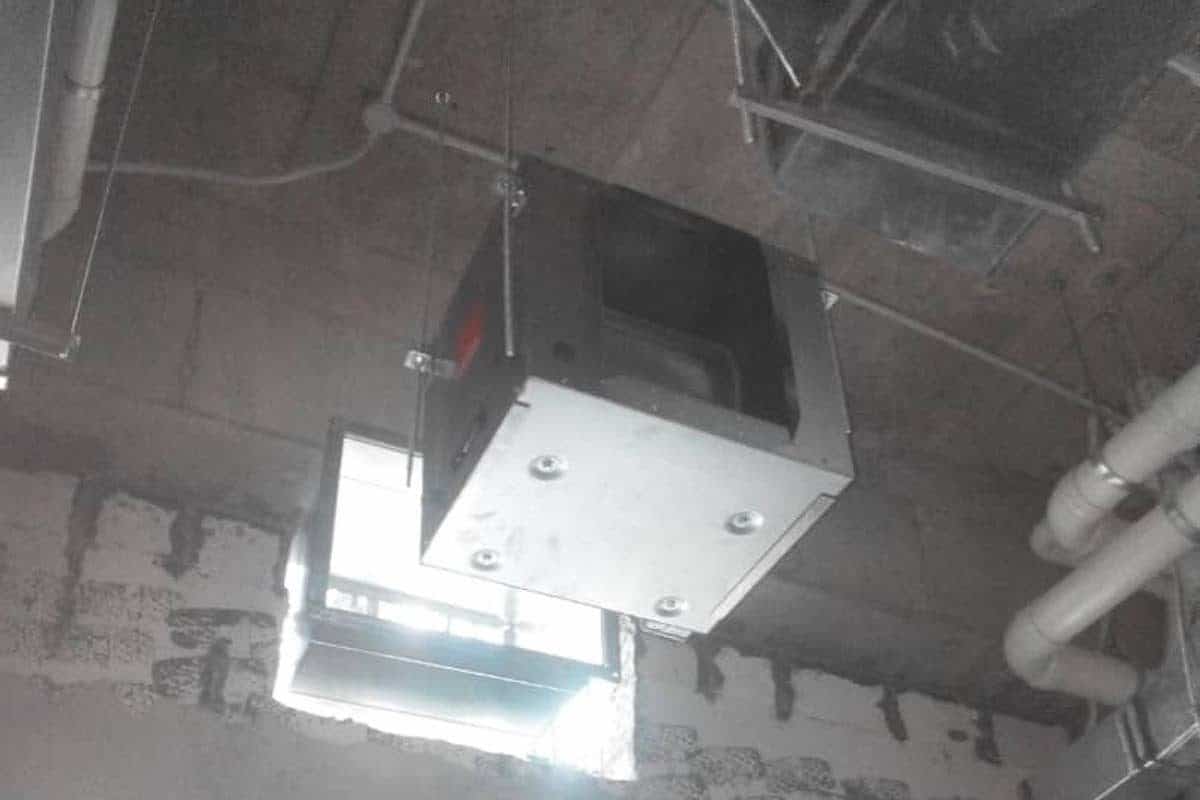
Cabinet in-line centrifugal fans are bulky. They are even bulkier with belt-driven. With the same airflow capacity, a smoke spill cabinet in-line centrifugal fan can be more than twice as big size as a smoke spill vane axial fan.
Similar to smoke spill vane axial fans, large cabinet fans need an auto-trans starter or a star-delta starter to initiate gradually to prevent a significant power surge.
Apart from having a cabinet, conventional in-line centrifugal fans (without a cabinet) are also very common in HVAC. They are used to ventilate toilets where noise is not a concern.
In the meantime, I would like to inform you that you can learn quicker by getting my HVAC Begin (eBook) if you’re a beginner. But, if you have a year or two of experience, then I would suggest you consider my HVAC Basics (eBook). Nonetheless, I encourage you enroll in my HVAC Beginner Course: 10 Days to Become Competent in HVAC if you want to equipped yourself with a complete set of basic HVAC skills.
HVAC Beginner Course
Learn the most basics and foundational HVAC skills including cooling capacity calculation, equipment selection, duct sizing, pipe sizing, exhaust fan sizing, controls, electrical and more.
3. In-Line Mixed Flow Duct Fan
In-line mixed flow duct fans are mostly used to ventilate toilets and mechanical rooms. Most of the time, they are small in airflow capacity and non-fire-rated.
Often, in-line mixed flow duct fans are selected when the airflow is too low for centrifugal fans and too high for propeller fans. Many in-line mixed flow duct fans can only handle airflow up to 2000 m3/hr.

While axial fans and cabinet fans are made of galvanized steel, both the impeller and the casing of in-line mixed flow duct fans are typically made of reinforced plastic. Hence, in-line mixed flow duct fans are lightweight and they are very easy to install and perform maintenance.
In-line mixed flow duct fans are round in shape. Their maximum operating temperature is around 40°C. The largest in-line mixed flow duct fan in terms of physical dimension is only around 300mm in diameter.
Unlike axial fans and cabinet fans, mixed flow fans usually use a DOL starter (direct-online starter) because they don’t create a power surge with low airflow capacity.
4. Wall-Mounted Propeller Fan
Wall-mounted propeller fans are the simplest form of ventilation fan in HVAC. Often, they are coupled with auto-shutter or gravity-shutter where their louver will automatically close when their fan is not in operation.
As the name suggests, wall-mounted propeller fans are installed on the wall. In residential buildings, they can be found in the kitchen and the toilet. In commercial buildings, they can be found in electrical rooms such as TNB substations in Malaysia.
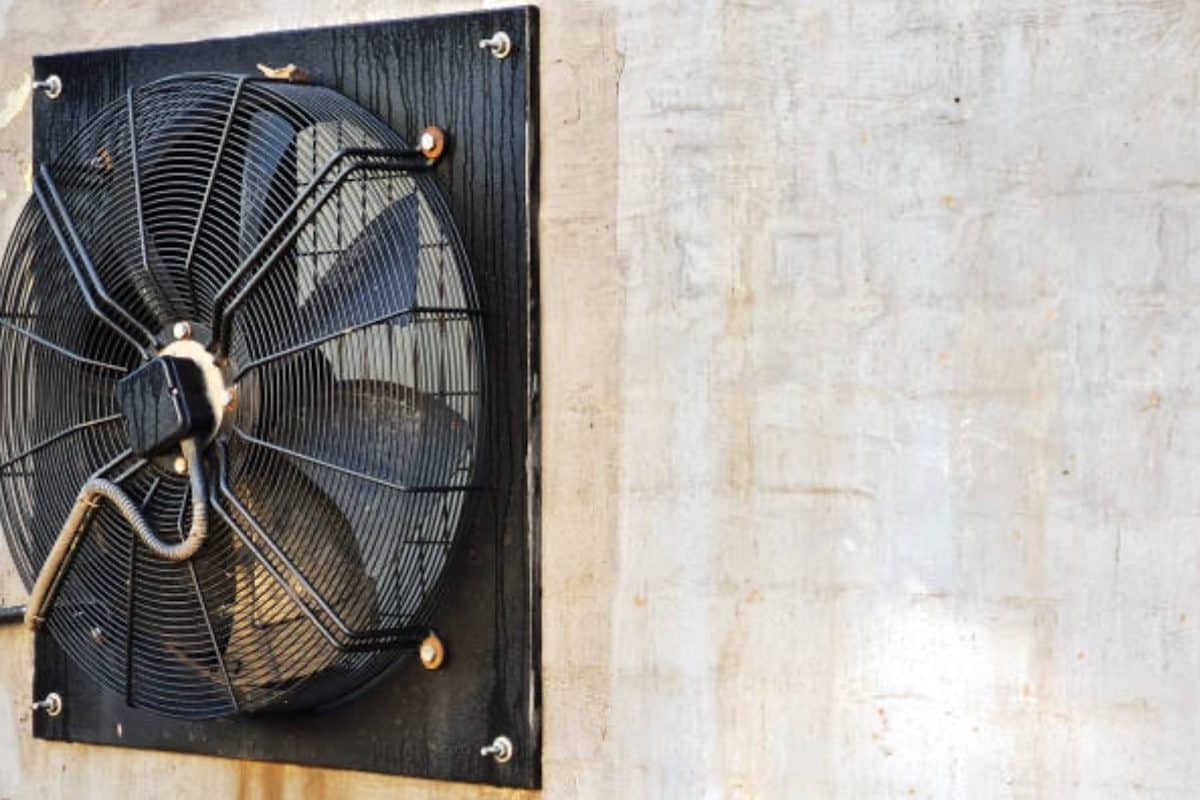
The main disadvantage of wall-mounted propeller fans is noise. So, some people prefer to use a mixed flow fan than a propeller fan that doesn’t have noise suppression.
However, the biggest advantage of wall-mounted propeller fans is simplicity and low cost. They are very easy to install, use, maintain and repair. Furthermore, they are not concealed above the ceiling which makes the installation process quick.
Although some propeller fans can handle large airflow, most wall-mounted propeller fans are used when the airflow requirement is around 100 m3/hr due to noise concerns.
A conventional power outlet can power a small capacity wall-mounted propeller fans. Most of the time, a starter is not required unless operation control is needed.
5. Induced Jet Fan
Induced jet fans usually come in a pair. They are mostly used to extract smoke from basement carparks. However, many countries are starting to ban the use of induced jet fans for smoke extraction due to effectiveness issues.
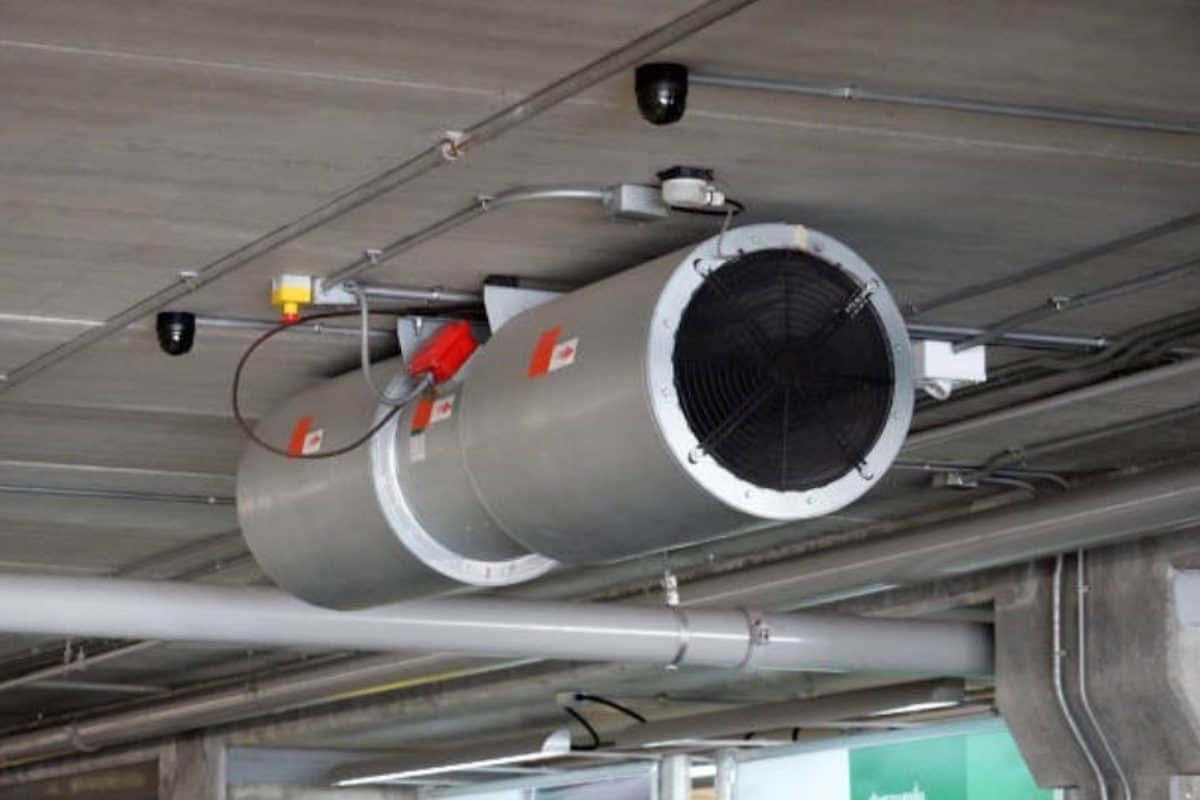
Induced jet fans don’t require any ductwork. Air is moved from one section to the other section through multiple induced jet fans. Hence, a single basement floor often needs more than 10 induced jet fans.
Nevertheless, induced jet fans are still used in many buildings, especially those with very low floor-to-floor height. They don’t have sufficient space for smoke extraction ducts.
Other than that, induced jet fans can also be used as basic exhaust fans to ventilate basement carparks.
Lastly, consider my HVAC Begin (eBook) if you’re a beginner and you want to have a foundational knowledge in HVAC. But, if you have a year or two of experience, then I would suggest you consider my HVAC Basics (eBook). Nonetheless, I encourage you enroll in my HVAC Beginner Course: 10 Days to Become Competent in HVAC if you want to equipped yourself with a complete set of basic HVAC skills.
HVAC Beginner Course
Learn the most basics and foundational HVAC skills including cooling capacity calculation, equipment selection, duct sizing, pipe sizing, exhaust fan sizing, controls, electrical and more.
If you have anything to add (or ask) about this topic, leave a comment down below!




